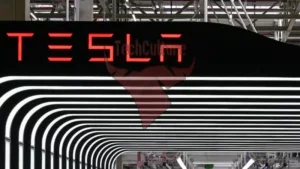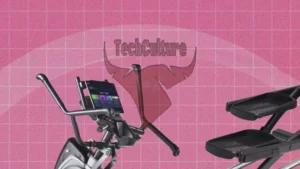We sat down with Mohan Carl Peters, Senior Transformation Manager at RITEC Consulting. RITEC specializes in digital and business transformation, helping companies optimize operations processes and adapt to changing business environments.
Mohan, Thank You for taking the time to talk to us today. Can you tell us a little bit about yourself and what you do, both in and outside of work?
My pleasure, thanks for having me! I’m glad to be able to talk about digital and business transformation anytime I get the chance!
I’m a Digital Transformation Consultant with RITEC Consulting; we specialize in digital and business transformations; we help companies align their businesses, equipping them to operate optimally and handle disruption in the 4th industrial revolution.
Outside of work, I’m an avid handpan player; it’s a percussion instrument invented in Switzerland that combines the Indian Ghatam and the Caribbean Steelpan elements.
Very interesting; I never heard of this instrument but sounds intriguing! Our main focus for this interview is to find out what exactly Digital Transformation is? It is a term thrown around quite a bit nowadays, but its meaning seems to be elusive. Can you help me and our readers understand Digital Transformation?
In essence, we help companies transition their business into new ways of working, thinking, and new growth opportunities considering the digital element in strategy, operations, process, and people. I like to think that Digital transformation stems from Business Transformation with the added “digital” element, a single word that shifts the entire perspective.
What then would you say are the main differences between digital transformation and business transformation?
They are, in fact, very similar and overlap. For example, one of the methodologies used in Business Transformation and Organisational Development is the Star model created by J. Galbraith in the early 2000s. This model looks into the main facets of Strategy, People, Structure, Processes, and Rewards.
The model we use for Digital Transformation…. looks into People, Process, Technology, Core Platform/Business Model, and Digital & Business Strategy. It is easy to see how it connects with the Star model.
At RITEC, when we look into the Technology aspect, we deep dive into the Delta Digital framework, which is, if you imagine a triangle, on one side, is CX, on the other is Employee Experience and on the last is Supplier Experience. So we analyze technology from these aspects to see how we can better improve a company’s performance.
Digital Transformation then is quite a complex endeavor, but it also seems like the fundamentals are nothing new?
Yes… in structure, it is nothing new …but slightly different in.. what we do…it has a deeper examination of technology in all facets. I see it as a chain of events, though, that are interconnected to each other. So, to delve a little deeper…
In Strategy, we examine the external facet – Opportunities and Threats of the client, industry, and changes. This is then connected to their exploration efforts in their Business Model. Also, we help them understand their existing business…value stream and exploit that to the best of their ability. The keywords here being Explore vs. Exploit.
In Process, we help our clients implement Agile ways of working within their organization and help them scale that effort. Also to consider allocation resources as Agile teams work differently from traditional waterfall teams. This helps customers capture value more efficiently. Processes then inform the People side of the business, including HR efforts, structures, incentives, and ultimately culture, which is a by-product of policy and behaviors.
Within the Technology aspect, at RITEC, we consider the Delta Digital model to construct Technology Enablers. On one apex is Customers Experience, on the other is Employee Experience and on the other is Supplier Experience. We start to analyze technology from these aspects to see how we can better improve a company’s performance because this considers factors such as Digital Marketing, their Data Ecosystem, Usage, and their support software.
The people aspect especially rewards… incentives… tends to get overlooked in some Digital Transformations but can have a massive impact on the long-term sustainability of a transformation.
Can you elaborate a little more on that point of rewards?
The moment companies can incentivize behaviors, actions, and performance targeted towards transformational goals, they will have a chance at a successful transformation. At one of the companies I conducted a transformation for, I curated a KPI and incentive program that rewarded teams and individuals not only for their statistically measurable achievements but, more importantly, for their behaviors. The outcome of this action will help to align a coherent culture in line with the transformation vision.
I’ve heard the term ‘Greenfields.’ How does that connect to Digital Transformation, or is it even connected?
Greenfields is a structure of transformation applied by some companies. It is essentially…..starting a company anew, a whole new “division” of a company, at a new location, new ways of working, new employees, even its CEO, everything geared towards a new company. This model is more focused on how can this new Digital Business Unit create a disruptive business offering.
This is an evolving field, so there are a few structures that we can deploy; essentially, it would need to be tailored to a particular organization’s needs.
Mohan, I think we’ve reached the end of our time for today. Thanks for that overview of Digital Transformation. That’s cleared it up for us, and I hope it has for our readers too. I hope we can catch up again soon. Where can our readers learn more about you and your work?
My Pleasure! You can find out more by visiting our website at and by connecting with me on LinkedIn.






